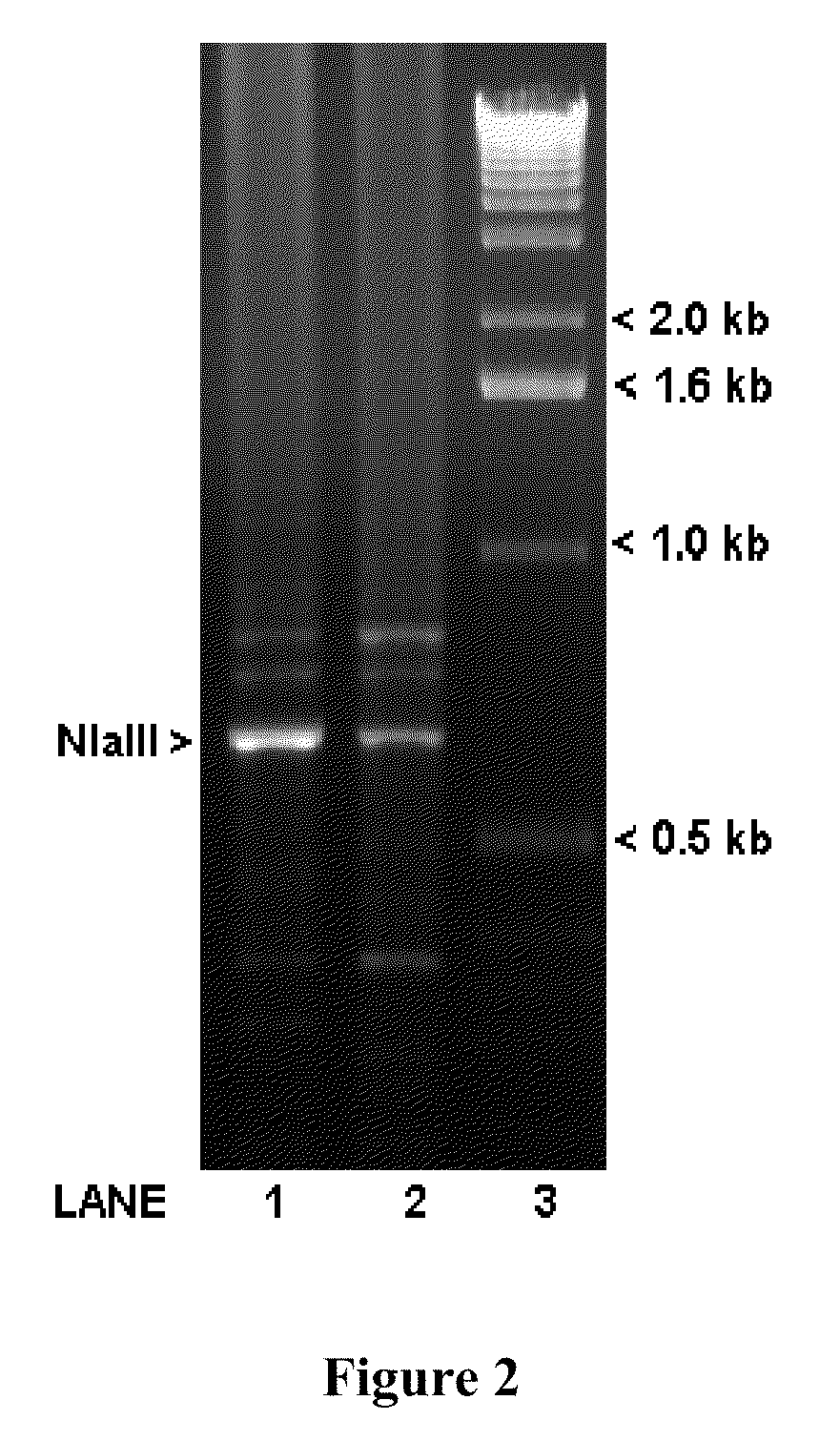Nucleotide sequence of shrimp actin promoter and its use in genetic transformation biotechnology
a technology of shrimp actin and promoter, which is applied in the field of isolated actin nucleic acid promoter molecules, can solve the problems of shrimp infectious diseases that have taken a devastating toll on aquaculture production, viruses posing the greatest threat to shrimp survival rates, and no effective chemicals or antibiotics to treat viral diseases
- Summary
- Abstract
- Description
- Claims
- Application Information
AI Technical Summary
Benefits of technology
Problems solved by technology
Method used
Image
Examples
example 1
Methods and Procedures for Isolation and Identification of Shrimp β-Actin Promoter Nucleic Acid Sequence and Associated Transcriptional Regulatory Elements
[0055]DNA Extraction
[0056]To obtain Shrimp DNA, the muscle tissue of one Litopenaeus vannamei, frozen at −80° C., was ground with a pre-cooled mortar and pestle and lysed in a Proteinase K solution. DNA from the lysate was then extracted with Phenol / Chloroform and used as a template for PCR.
[0057]Beta-Actin Intron 1 Sequence and Promoter Sequence: PCR and Sequencing
[0058]Oligonucleotide primer pairs for PCR were designed using NetPrimer (Premier Biosoft International), based on the GenBank mRNA sequence submission AF300705.1. Part of the first intron sequence was obtained by using the primers: LV-B-act-27-Se: 5′-GAGCCCGAGAGGAAGCAG-3′ (SEQ ID NO:2) and LV-B-act-663-As: 5′-CTTCATCAGGTAGTCTGTGAGGTC-3′ (SEQ ID NO:3)) to generate PCR products that were then gel-purified using QiaQuick Gel-Extraction Kit (Qiagen) and sequenced with the ...
example 2
Shrimp β-Actin Promoter and Associate Transcriptional Elements Plasmid Construction
[0080]Construct pAAV-CMV-mRFP using CMV as the promoter for RFP gene expression was employed as a positive control for the transfection test (FIG. 7). A promoterless pAAV-mRFP was also included in this study as a negative control.
[0081]To test and determine the biological activity of the putative shrimp promoter, the CMV promoter was removed from pAAV-mRFP by Mlu I and Sac II digestion. The shrimp M-actin promoter DNA fragment and associated transcriptional regulatory elements were released from plasmid pβ-actin-GFP (pGFP-1) by Hind III and Sac II digestion, and subsequently cloned into the digested pAAV-mRFP DNA to generate pAAV-β-actin-P-mRFP construct (FIG. 7).
[0082]Plasmid DNA was extracted from the identified colonies following standard transformation and used to transfect 293T cells using an optimized dextran-mediated transfection method (Wu et al., “Addition of High Molecular Weight Dextran in ...
PUM
| Property | Measurement | Unit |
|---|---|---|
| temperature | aaaaa | aaaaa |
| temperature | aaaaa | aaaaa |
| volume | aaaaa | aaaaa |
Abstract
Description
Claims
Application Information
 Login to View More
Login to View More - R&D
- Intellectual Property
- Life Sciences
- Materials
- Tech Scout
- Unparalleled Data Quality
- Higher Quality Content
- 60% Fewer Hallucinations
Browse by: Latest US Patents, China's latest patents, Technical Efficacy Thesaurus, Application Domain, Technology Topic, Popular Technical Reports.
© 2025 PatSnap. All rights reserved.Legal|Privacy policy|Modern Slavery Act Transparency Statement|Sitemap|About US| Contact US: help@patsnap.com



